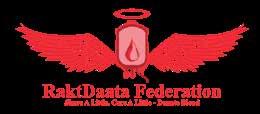
32 minute read
dr. Kajal nK
AyuRvEdiC sKin CARE in WinTER sEAson - Kajal n. K.
Getting on to winter season we can notice cracked lips, cracked heels and dry skin! All this can be easily dealt by doing some simple Ayurvedic rituals, and thereby making the winter looking all pretty and pink in you!!
Advertisement
Due to it being cold and windy in winters it is important to maintain the balance of the vata and kapha doshas.
A few simple things you can incorporate in your daily routine during the winters.
1. ABHyAnGA (Body mAssAGE) - the best way to nourish the largest organ of your body, that is right your skin!!
A daily 10 min self- full body massage right before your shower (on empty stomach) will maintain excellent health of your skin.
Pure sesame oil is best due to its warming properties, also Balashwagandadi taila can be used for its rejuvenating and strengthening properties.
Abhyanga improves the texture of skin making it soft & supple, improves circulation and lymphatic drainage, slows the ageing process, and improves muscle tone as well.
2. usE of snAnA CHuRnAs - After Abhyanga bath powders can be used instead of the conventional harsh soaps.
A combination of powders of triphala, neem, and chickpea can be applied on the skin and scrubbed to remove the oil from the body followed by warm water shower.
This adds to the effect of Abhyanga and keeps the skin clear and healthy.
3. vyAyAmA (EXERCisE) - Exercise will help you warm up and sweat those toxins out and keep your
skin healthy and lustrous.
Sweating through exercise can be a big game changer for skin health.
But remember not to over exert yourself and exercise only to half your capacity or strength.
4. KEEP youRsElf WARm - Get those sweaters out and cover yourself with layered clothing. Protect yourself against cold winds as it can aggravate vata and dry your skin.
5. There is a saying which goes you ARE WHAT you EAT
Your skin health depends on what you eat and how it gets digested!!
Drinking warm soups, taking in of warm cooked food (sweet, sour or salty in taste) with ghee as a garnish will make you hydrated.
Avoid raw, uncooked foods.
You can also consume Ginger tea which will not only keep you hydrated but also balances your vata and kapha, regulates digestion in turn keeping your skin healthy.
A Few sIMple reMeDIes:
For Cracked lips or Dry skin - Apply ghee on your lips and dry skin patches (avoid if you are prone to acne) Apply honey on your lips at bedtime.
For Cracked Heels - Apply a small amount of sesame oil or ghee and wear socks and wash it off in the morning (be careful so
as to not to apply in excess quantities that may cause slips or falls)
fACE PACKs:
pack 1 - Mash half a banana , add 2 tablespoons of milk and a juice of a lemon and apply on face and neck , leave it for 20 minutes and wash off with cold milk.
pack 2 - Make a paste of 1 teaspoon of hibiscus powder, a tablespoon of rice flour and yoghurt, apply on face and leave it for 20 minutes and wash it off and pat dry.
Always pat dry your face and never rub your face with the towel Change your pillow covers once in 3 days Avoid speaking for long hours on the phone directly as the phone heat may damage your skin, instead use headphones whenever possible Do not exfoliate a lot Wash your face before you go to bed Sleep warm
Stay Warm, Eat Warm and Stay Healthy!!!
BEAuTY & IT’S BEASTlY SECrETS
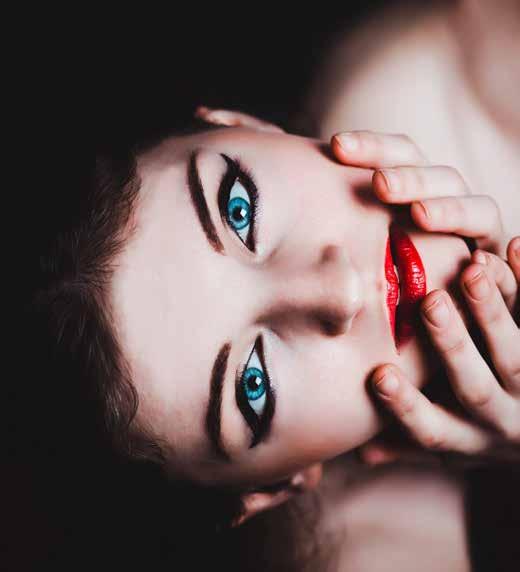
A Renovation Through AYurvEdA
- dr. Aiswarya K.
Beauty is a subject of socio-medical importance. People are using cosmetics not only for curing their skin problems but in routine to maintain the skin appearance and beauty. Labels on cosmetics and body care products are a tough code to crack. Certain cosmetics that we use in our day to day life are thought to contain carcinogens, reproductive toxins and other chemicals that may pose major health risks. Particularly, Lipsticks and kajals are rich in lead which can cause brain and eye damages. Similarly in seasonal disturbances we apply moisturizers in a regular basis with the thought that it is skin friendly, where, in actual moisturizers are rich in mineral oil and paraffins causing skin damage and skin diseases. Similarly , since from years we are addicted with talcum powders even baby powders , recent studies has shown that many branded talcum powders are rich in carcinogens inturn causing ovarian cancer like dreadful conditions. Deodorants and antiperspirants are a part of our life as an addiction, but just imagine the fact; phthalate containing deodorants are the main reason for endocrine disruptions, causing liver or kidney damage and even cancer. The list is never ending like nail polishes, bleach creams, hair colors, foundation creams all are linked with major lifestyle The Ancient Ayurveda | Nov-Dec 2020 | Page 41 disorders including reproductive toxicities, infertility, neurotoxicity etc.
When we dress properly or do cosmetics or if someone is commenting about our looks, we are getting some positivity as well as confidence. But the question is why we have to sacrifice our physical health for getting mental happiness? As an organic era, it’s high time to leave these carcinogenic cosmetics and go to nature with the beauty of Ayurveda.
AyuRvEdiC ConCEPT of CosmEToloGy
Cosmetic approach of Ayurveda is related to physical, mental and spiritual beauty as a combined unit project. Ayurvedic cosmetology explains Physical beauty as • Beauty attained from birth • Beauty gained through treatment procedures
Be it black or white complexion, God given beauty can’t be changed and it depends on the constitution (Prakruti) of a particular person. Dealing with Ayurvedic aspects of cosmetology we can enlist into 2 broad aspects.
1. Rasayana (Rejuvenative therapy) 2. Other external applications Ayurveda explains rejuvenative therapies for improving longevity, complexion and for attaining physical as well as mental stability. Certain rasayanas have specified cosmetic indications also. For example, Chayavana prasya, amalaka Rasayana, narasimha ghrtha etc.
AyuRvEdiC BEAuTy PARlouR
A renewed thinking of Ayurveda - Ayurvedic beauty parlour. Ayurvedic books like Haramekhala, charucharya etc had described various cosmetological aspects that can be included under the currently available cosmetic products. So let us have a look on some.
1. dECoRATivE CosmETiCs
a) primers
Certain formulations described in classics can produce the effect of primers when used continuously for 1 month. Seeds of Badara dried - powdered & added with honey and is well macerated to a paste when applied will removes the unwanted facial blackish spots making similar to the effect of primers.
Another formulation, Vachadi choorna also plays a relevant role in this aspect.
b) lipsticks
Lipsticks are used to add color and texture to lips and can be made naturally with beetroot juice and ghee in a fixed proportion. Various formulations have been mentioned in classics also. Artists performing ‘theyyam’&
‘kathakali’ (arts of Kerala) make their lips red by applying purified & powdered manashila along with coconut oil as paste. No toxicity has been reported till date. But usage of this should be strictly done under medical supervision. Many natural ways to prepare lipsticks and lipbalms are available now a days with beetroot, bee wax etc.
c) Kajal
Ayurveda had emphasized the importance of kajal and had explained various formulations that can be used as kajals. Extract the juice of bhrngaraja (Eclipta alba) and dip a cotton wick in it and after that light up diya with Beauty & It’s Beastly Secrets that wick and collect the extracted ashes by keeping a clean bowl above the diya, without disturbing the light. Collected ashes can be mixed with castor oil or desi ghee and stored in containers. It can be preserved even for years.
d) Concealer
Concealers are used to cover any skin imperfections like blemishes, undereye discolorations etc. Ayurvedic treatment procedures like Nasya (Nasal Inhalation) with shadbindu taila plays a very relevant role in removing undereye discolorations. Facial applications with paste made up of Sariba or nalpamara churna or eladi churna along with milk can be applied for removing blemishes.
e) Talcum powders
In an Ayurvedic way, we can replace toxic effects of talcum powder with Lyophilized powder of tugakshiri added with Jasmine extract thereby providing glowing scented skin.
2. CARE CosmETiCs
Skin care plays a very relevant role in maintaining the beauty and hence only Moisturizers became demanding in market. Apart from using chemical lodged moisturizers we can use Coconut oil and tender coconut water to moisten the skin. For maintaining the lipglow, lipglosses and lip balms can be prepared by mixing, powder of Yashtimadhu (Glycrrhyiza Glabra) along with madhu. In a better way for preservation, beewax, along with butter can be made which can be stored for 6 months. For getting facial glow, Acharyas had described various facial masks in different contexts on the basis of seasons. Rakta chandana ,manjishta ,lodhra, arjuna etc are the drugs used for preparing facial masks.
Cosmetology is a vast subject related to many subjects and objects, in present context it has been dealt in relation to personality and beauty as both are having equal importance. There is a great demand of Ayurveda in the field of Cosmetology due to reduced adverse effects. Proper research works and clinical studies in these particular yogas thereby validating these yogas will help our science Ayurveda to flourish in Ayurvedic cosmetology.
HAIR CARE IN WINTER SEASON
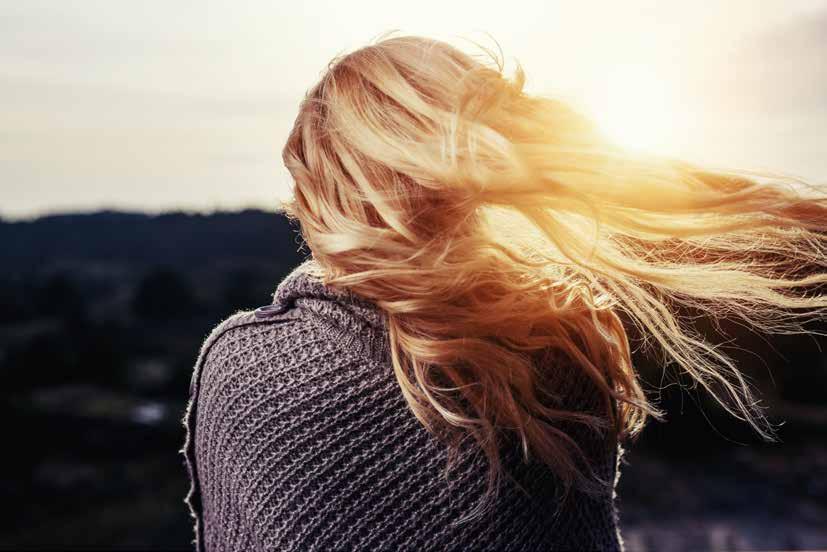
Winters are all about festivals , celebrations, long cozy nights and good foods, but when it comes to skin and hairs winter seems little disappointing, it becomes really difficult to maintain good quality of hairs throughout the season as extreme cold conditions leads to various hair problems like dryness of hair, hair fall, dandruff, frizzy hairs etc.. So, here’s an introduction to some of the common hair problems arising during winters along with their ayurvedic remedies.
Dandruff is one of the most common problem people face during winters, ayurveda explains it as “darunaka”, it manifests due to vitiation of vata and kapha dosha. Aggravated vata dosha leads to dryness of kapha leading to excessive itching and scaling in scalp region. The flaky layer of dead cells deposits in hair roots making hairs weak and more susceptible to fall off, furthermore these scales (dead cells) fall on face and shoulders resulting in acne problems.
Also hair fall is a common problem among youngsters now a days, ayurveda introduces hairfall as “khalitya” it is considered as a problem of Vata and Pitta dosha vitiation making the hair to loosen from its roots and fall. The kapha and Rakta doshas obstruct the growth of hairs resulting in hairfall.
1. AyuRvEdiC THERAPiEs foR HAiR CARE-
A) shiroabhyanga (oiling)- Siroabhyanga is the ancient procedure of hair oiling mentioned in dincharya, frequent oiling in scalp region with some ayurvedic oils containing anti-fungal properties helps to get rid from dandruff problems. some of the effective oils are, “Dhaturpatraditailam” ,”nimbatailam” And “Nilibhringaditailam”. The primary cause of dandruff is a fungi named as “ Candida” And “malassezia” hence the antifungal properties of these oils leads to better results. Also “bhringrajtailam”, “Tilatailam”, and “coconut oil “are helpful in getting rid of hairfall and dry hairs. The head massage in Shiroabhyanga enhances the flow of oxygen and blood into your scalp, thus, ensuring nutrient supply to your follicles. A regular Shiroabhyanga promotes healthy nourishment to your hair.
B) nasya- Nasya is one of the popular panchakarma procedure mentioned in ayurveda, the practice of lubricating your nasal passages with ayurvedic herbal oils is called “Nasya”.
Ayurveda suggests Nasya as one of the best therapy for hair loss related to the imbalance in tridoshas. In Nasya kriya, you need to lie down horizontally and slightly tilt your head backward. Few oil drops are instilled into the nostrils. Regular practice of nasya with “Triphalaghrita”, “Anutailam” Or “goghrita” (Cow’s ghee) leads to better results in hair fall and also promotes lustre and bounce to your hairs.
C) shirodhara- In this procedure warm oils or liquids formulated with soothing Ayurvedic ingredients are poured on your forehead from an oscillating container hung above. While the medicated liquid or oils comes down from the forehead to your scalp, the therapist gives a gentle massage on your scalp. This has an immensely soothing effect on your nervous system, this therapy is exceptionally beneficial to balance Vata and Pitta doshas in the body. Besides decreasing your hair loss, Shirodhara Hair Care in Winter has a calming effect on your mind. It reduces stress, induces sleep, regulates fluctuations in blood pressure, and relieves you from migraines.
2. oRAl mEdiCATion-
There are some ayurvedic medicines usually prescribed for better hair growth, which includes “Narsimharasayan”, “Chyavanprasha”, “Amalakirasayan”, “Triphalachurna”, triphalaghrita” and many more one can get accurate medication by seeking advice from Ayurveda professional.
3. HomE REmEdiEs foR HAiR CARE-
A) Soak two tablespoons of fenugreek seeds (methi) overnight into water, grind softened seeds to make fine paste in morning apply over scalp. Leave for half an hour and then wash thoroughly with water, this is effective remedy for dandruff.
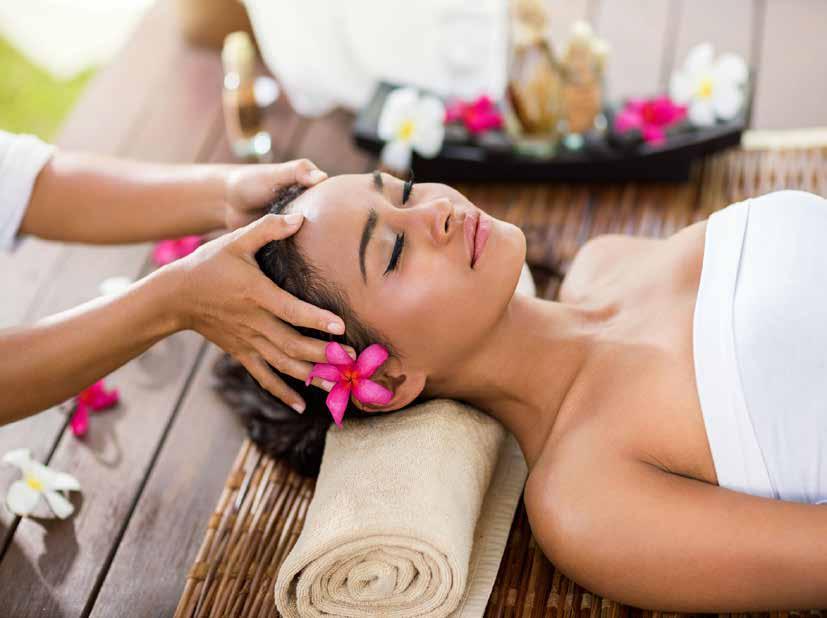
Hair Care in Winter B) Boil neem leaves in water. Cool, strain and rinse hair with it, the anti-fungal properties of neem helps to get rid from dandruff and also promotes healthy and nourished hairs.
C) Add 1 teaspoon of camphor to half a cup of coconut or neem oil, massage gently in scalp regularly before bed for better results in dandruff.
D)“Ghritkumari”(aloevera) is a popular plant widely used for hair care, rubbing aloevera gel in hair roots helps to fight against dandruff while it’s application all over helps to achieve frizz free hairs and also adds shine and bounce to hairs.

4. mAinTAin nuTRiTion And sTREss fREE lifEsTylE-
Green leafy and bitter vegetables are good for hairs, also fresh coconut, almonds, and walnuts are rich in vitamin E and hence promotes extra luster to hairs. Also favor healthy fats like olive oil or cow’s ghee and avoid foods which contain high amount of preservatives, refined sugars and food colors. All over foods rich in protein, vitamin A, C and E, Biotin, zinc and Omega-3 fatty acids should be incorporated. Also proper hydration is essential for hair care.
One can practice “pranayama” And “yoga poses” to achieve stress Free State of mind as stress now a day has become one of the main factor responsible for hair fall.
5. THinGs To Avoid-
A) Avoid shampooing too often in winters as it removes vital natural oils and maximize the use of paraben free herbal shampoos and conditioners to maintain lustre and avoid excessive dryness of hairs. Some of the ayurvedic herbs with great hair cleansing properties are Kumari (aloevera), Triphala (haritaki, amlaki, bibhitaki), methika(fenugreek), nimba(neem), shikakai and areetha.
B) One can use head cover made of satin or silk in order to avoid direct contact of pollution and heat to hairs as high amount of pollution leads to hair damage.
C) Avoid excessive use of hair styling products especially those which produce high amount of heat as it leads to permanent damage and excessive hair fall.
D) Avoid applying oil in dirty scalp as it not only reduce its efficacy but also increases hair fall, hence the appropriate method of oiling is to gently massage lukewarm oil in freshly washed clean and dirt free scalp.
E) Those with the complaint of “premature greying of hairs” Should avoid extra spicy and deep fried foods as it vitiates pitta and triggers further greying of hairs.
- dr. Prachi Joshi
The Ancient Ayurveda QUIZ CONTEST

SCAN here to Participate
Quiz Contest Rewards:
etc. are rich in…
a) Vitamin B b) Vitamin A c) Fats d) Iron
Pregnancy?
a) First Trimester b) Second Trimester c) Third Trimester d) None of the above
example for…
a) Ideal Diet b) Perfect Diet c) Incompatible Diet d) Nutritious Diet
The best herb to improve intelligence and memory and also acting as anti-diabetic and anti-ageing is…
a) Curry Leaves b) Pudina c) Brahmi d) Methi
Chutneys can cause…
a) Food Poisoning b) Health c) Nutrient Diet d) Balanced Diet • First three winners will be rewarded with a complimentary print copy of magazine • Names of all the winners will be published in next issue • We will provide an E-certificate to all participants of quiz
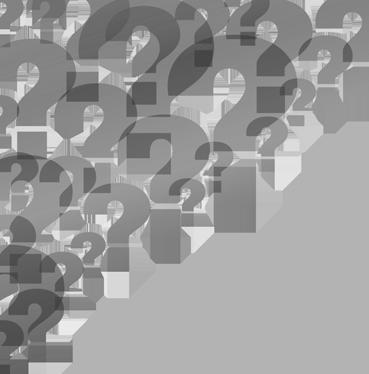
Terms & Conditions:
• All Questions are based on Previous Issue • Scan QR Code and Participate Quiz Contest • The Ancient Ayurveda magazine Authors are not
food items such as egg, leafy vegetables, cereals
vitamin K is needed in which trimester of
mangoes and cheese along with hot drinks is an
daily intake of Khaman dhokla along with imli
allowed to participate quiz contest
6.
7.
8.
9. How many layers of skin has Ayurveda explained in samhitha
a) 5 b) 6 c) 7 d) 8
Which is the vitamin that has been called as ‘Hair vitamin”?
a) Vitamin B12 b) Vitamin B7 c) Vitamin A d) None of the above
Among the following, food which is not been recommended for daily intake…
a) Milk b) Mung Bean c) Rice d) Dahi
Chyvanaprashya is best advisable on…rithu
a) Hemant c) Sarat b) Grishma d) Varsha
10. Karela, Parval, Palak, mooli etc like sabjis are better used in…rithu
a) Hemant b) Grishma c) Sarat d) Varsha
ROLE OF PURIFICATION THErAPY (PANCHAKARMA) IN WINTER SEASON
- dr. neelima K. s.

Ayurvedic concept explains that an year is divided into six seasons Sisira, Vasanta, Grishma, Varsha, Sarat, Hemanta by the influence of Vayu, Surya and Soma (Wind, Sun and Moon)which indeed maintain the biological clock of universe. Hemanta Ritu, the ayurvedic winter season commence from mid November and extend up to mid January. Climatic variations will impart certain changes in our body that may trigger the doshic balance and optimacy. Mandatory improvisation should be incorporated in our life style, diet and routine to maintain doshic normalcy. The specific Ayurvedic winter care life style modifications and dietary regimens come under Hemanta Ritucharya.
Dusty environment, Humidity in temperature, chills and cold winds may lead to imbalance among Vata, Pitta and Kapha dosha, the three pillars of human body. Accumulations of kapha dosha, pacification of pitta dosha are the basic causes for vata dosha aggravation in winter. Pitta dosha which has been vitiated in sarat ritu, if properly not cured will lead to ailments in Hemanta Ritu. Due to increase in respiratory tract infection in winter, people have a misconception that immune system will be week during winter season.However Ayurveda believes Hemanta Ritu as best in strengthening immunity due to strong digestive fire ,which fluctuates in seasons and planetary cycles.
Panchakarma, the purification therapies plays vital role in the preservation, maintenance and conservation of health and longevity. These are also a part of preventive medicine (Swasthvrita). Comparing with that of samana chikitsa (Internal medicines), Sodhana chikitsa (panchakarma) has specific role, because the doshas get expelled and purified by sodhana chikitsa never create any problems. In present era the diseases are mainly caused due to indigestion, which leads to Ama formation, ie disturbed homeostasis, resulting in decreased nutrition and immunity, impaired excretion of waste. All these leads to the formation of free radicals, causing tissue damage and final outcome will be metabolic disorder. In such conditions only a way is to cleanse of channels (Sroto Sodhana) through Panchakarma.
Upcoming century’s people may be prone to pandemic diseases due to low immunity. Ayurvedic Acharyas have explained Dinacharya (Daily Regimen), Ritucharya (seasonal Regimen) for boosting our immune system to keep away unknown diseases.
PREvEnTivE AsPECTs of PAnCHAKARmA
external Oil application (Abhyanga) • Nourishes the dhatu and increases strength of the body
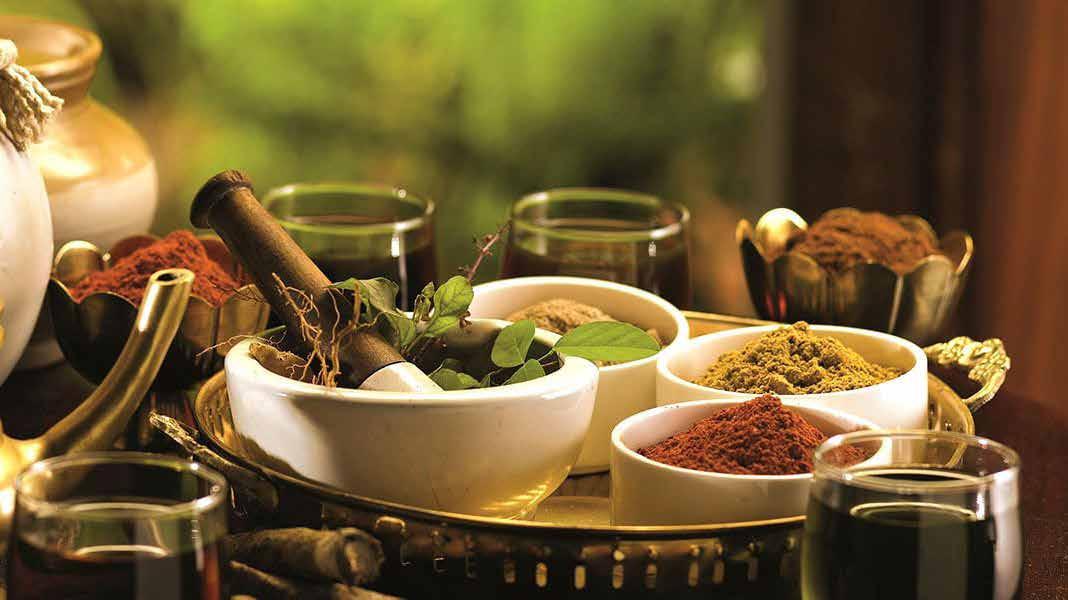
• Corrects and prevents neurological and joint disorder caused by vata dosha • Provides the ultimate effect of exercise in a passive mode 1. Head massage (Siro abhyanga) • Resolves hair related headaches • Improves blood circulation and enhances sleep 2. Foot massage (Pada abhyanga) • Provides quick relief from roughness, stiffness, dryness, cracks, fatigue and numbness of legs • Promotes healthy eye sight. 3. Full body massage (Sharira abhyanga) • Promotes complexion, flexible and blood circulation • Prevent skin dryness and enhance complexion
inTERnAl AdminisTRATion of fATs (snEHAPAnA)
Stabilizer for your digestive fire 1. sodhana snehapana For purificatory purpose, sneha should administer as increasing dose day by day from 3-9 days 2. samana snehapana • A fixed dose of Sneha (10-20ml) for a fixed period or up to relief of disease Best in curing skin dryness, cracks etc. Balance digestive fire
fomEnTATion (sWEdAnA)
• Prime treatment modality for vata and kapha disorders • Protect the body from stiffness, heaviness and coldness. (i) sankarasweda: Pottali should be prepared with herbal drugs by making it hot potali and sudation done - It’s of 2 types 1. Snigdha. 2. Rooksha. • Snigdha: means by adding oil and doing sudation. - Eg: Shastikapindasweda, Annalepa, patrapinda, jambeerapinda. • Rooksha: means in dry form - Eg: Valuka, Choornapinda sweda. (ii) Nadisweda: Steam from herbal decoction performed with rubber tube connected to pressure cooker. (iii) parisekam : Pouring of medicated liquid like kashaya,taila, ghrita, milk, takra, Kanji, Dhanyamala, Gomootra etc over the body from specific height. (iv) Avagaha: Sitting in a tub containing medicated warm Kashaya, oil, gomootra, Dhanyamla, etc. (v) Upanaha: Application of warm paste of roots of
vatahara drugs macerated with a sour liquid, salt fats etc. and tied on described part of the body. (vi) Annalepam /shashtikalepam Process by which the whole body or any particular part is made to perspire by means of application of pudding specially prepared with shashtika rice. (vii) Vaasana sweda (cloth fomentation) Dip the thick cloth in medicated hot water or make cloth hot by placing over heat plane and fomenting specific parts of body. (viii) Ushnodaka snana Hot water shower with medicated water below neck.
vAmAnA (vomiTinG THERAPy)
Foremost therapy among panchakarma and considered as the best line of treatment for removing vitiated kapha. According to disorders performed with lavanodak (Salt water), kashaya, milk etc.
viRECHAnA (PuRGATion)
Seasonal purification for example Charakacharya mentioned season wise virechana drugs, like In hemanta ritu, Trivrit, Chitraka, pata, etc to be used to eliminate deposited pitta dosha.
vAsTi (EnEmA)
• Eliminating the impurities by administering medicated decotion and oils. • Potency from pakwashaya (Intestine) to restore normal function of vata dosha.
nAsyA (nAsAl PuRGATion)
Draining out of accumulated kapha from sinuses located in head through nasal passages with instillation of medicated oils, ghee, decotion,powders etc.Marsa (2 drops daily) and Pratimarsa nasya (increasing dosha) are the common types done.
RAKTAmoKsHA (Blood lETTinG)
Ultimate treatment modality for Twakroga and other Rakta janya vikaras by using needles leech etc.
dHoomAPAnA (mEdiCATEd smoKinG)
Dhoomapana indicated in hemantha rithu with agraru etc alleviates kapha which remains after nasya procedure, performed through nostrils and oral cavity.
udWARATnA (PoWdER mAssAGE)
Powder massage provide srothoshodhanam (Kapha haram).Enhances weight reduction and muscle building and also good for boosting the glow of skin.
GAndusA (mouTH fillinG)
Filling the mouth with hot medicated oil, lavanoda, kashaya etc.
It is helpful in protecting disease of neck, head, ear, oral cavity.
KAvAlA (GARGlinG)
Gargling with hot medicated oil, lavanoda, kashaya. It is indicated in the diseases where there is bahu kapha sancaya in mouth.
mooRdHni TAilA (HEAd PRoTECToRs)
Abhyanga (Head massage), Sekam (Shirodhara), Pichu (Head bandage), Vasthi (Head cap)
Indicated in hair fall, dryness, brittleness of hair, cracking of the skin, diseases of head, Insomnia, eyes etc...
ConClusion
Panchkarma plays a vital role in Hemanta Ritu (WINTER) by restoration of health and mental status through balancing digestive system and thereby enhancing immunity. Panchkarma procedure performed during winter helps to control vata dosha who is the main driver of other doshas and thereby rejuvenate, revitalize and rehabilitate body cells.
The Ancient Ayurveda’s
Expert Talk An Expert Panel of Ayurveda doctors will answer your health related queries.
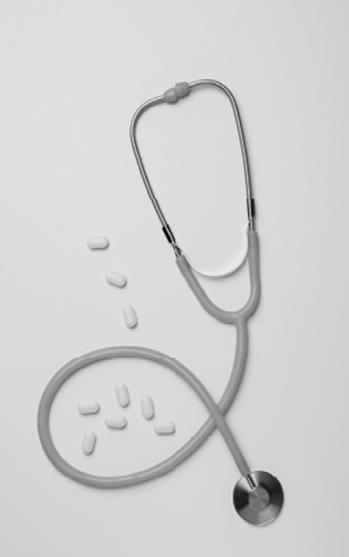
You can ask your health related questions, our expert panel who are having well and good experience in Ayurvedic clinical field will answer you, you can email on KoryfiGroup.India@gmail.com
dr. shanti R. nair MD, Ayurveda
dr. sarin T. MD, Ayurveda
Que. during winter season i am having dry skin and i want to avoid cosmetics, so can you please suggest some Ayurveda home remedies. - Hiral Ramanuj
Ans. In the view of Ayurveda “twak” depends on the prakruti of a person. For which you need an internal administration of drugs and external application. As the query was for a home remedy, application of Nalikera taila (Coconut oil) regularly over the skin will be beneficial as it can moisturize the skin. Drink at least 8 glasses of water and hydrate. It will be beneficial if you consult the physician directly and take the prescribed medicine.
Que. Regularly i have dandruff in my hairs, what’s its permanent solution in Ayurveda? - om Joshi
Ans. Hygiene is very important criteria like your bedcovers, bed sheets, and combs each day. Cover your head to prevent pollution while going outside. Never go outside with damp hairs. Option 1 - Regularly wash your hair with rice water. Option 2 - You can use Methi seeds powdered and soaked in water and this paste can be applied in your head, after 20 minutes it can be washed off. As this is winter season it will be better to use Rasnadi Churna after head wash. If needed do consult the physician for internal medicine.
Que. i am working woman since last 20 years and during corona lockdown i stayed in home for 3-4 months, since the days i am very depressed and lots of negativities are in my mind nowadays, please guide me how to come out from the depression and negativities? - Kaveri shah
Ans. A balanced diet regular exercise and reading good books, meditation, prayer and people with positive energy around you. Keep yourself engaged in doing activities of your interest. If you can’t handle the situation you need counseling from an expert doctor. The Ancient Ayurveda | Nov-Dec 2020 | Page 50
rOlE OF AYurvEdA IN COvId CArE
Coronavirus disease (COVID-19) is an infectious disease caused by a newly discovered coronavirus. Most people who fall sick with COVID-19 will experience mild to moderate symptoms and recover without special treatment.
The virus that causes COVID-19 is mainly transmitted through droplets generated when an infected person coughs, sneezes, or exhales. These droplets are too heavy to hang in the air, and quickly fall on floors or surfaces. You can be infected by breathing in the virus if you are within close proximity of someone who has COVID-19, or by touching a contaminated surface and then your eyes, nose or mouth.
Globally, the standard treatment modality has been struggling for almost a year to find the vaccine to curb the lengthening curve of the unprecedented COVID-19 pandemic with no final outcome yet. In the absence of deterring the Covid-19 scourge therapeutically, it has been acclaimed globally that strengthening the immune system will work wonders.
Ayurveda is the science of longevity and self-actualisation. It teaches individuals to live sustainably in harmony with nature, preserving and enhancing the wellness of the healthy
There is a chapter called “Janapadodvamsa Vyadhi” in Charaka Samhita, which means epidemics.
‘Rogāhāsaravepimandegnamsutarambhuterānitu”
As long as we keep our agni (digestive fire) strong, then illness will not happen to us. So, Ayurveda has a great way of prevention. This is how we can prevent being affected by coronavirus. Keep your agni strong and, to do that, follow your dinacharya. It is the first important thing that Ayurveda recommends.
This is a period to go within so we can follow our dinacharya (daily routine). Wake up early in the morning, brush your teeth, scrape your tongue, rinse your mouth and drink hot or warm water. Have ginger, cinnamon and cardamom tea, regular chai made with tulsi (holy basil, one or two leaves), or even mint, cinnamon and cardamom tea. These herbal teas boost energy.
There are simple herbal remedies; even though there is no common cold, you should take sitopaladi, talisadi, and mahasudarshanchurna. Take this preparation, ½ teaspoon three times a day or twice a day, every morning and evening.
Ifyouaretired,youmaynotwanttodothat.Youcan make a tea and just put a pinch of sitopaladi or pinch of talisadi into the chai. It will give wonderful flavour to the tea.
You Can take basmati rice and mung dal kichadi with vegetable sabjis (a style of cooking vegetables with spices). Hot food is good. It is better not to take cold drinks. No iced water; no iced cold beverage. No yogurt, cheese or ice cream. The cold foods will suppress your agni (digestive fire, digestive capacity) and exposure to cold will diminish your natural resistance. For that reason, try to avoid the cold, but you can have hot water. Sip it throughout the day or while eating food; put a little ginger in the water and make a hot ginger tea that is excellent.
With pranayama we can clean our pranavahasrotas, our respiratory system and it will give us a boosting of energy so that we can keep away the disease.
- dr. naveen varghese
Exploring Mother Nature - Dr. Sarin T.
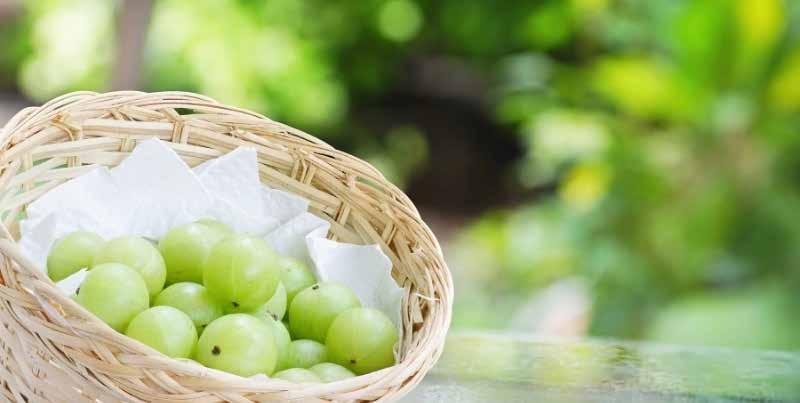
English name: Gooseberry
latin name: Phyllanthus emblica Linn. / Emblica officinalis Gaertn.
Hindi name: vkaoyk
family: Euphorbiaceae
We will be more familiar with amla or Indian Gooseberry during winter season. The most common fruit which has got highlighted during this covid era. So let we have a look on that.
Amla or Indian gooseberry is a small to medium sized deciduous tree which is found throughout India and our neighbouring countries. It is one of the most important and commonly used herbs in Ayurveda and Unani systems of Medicine. Amla is highly nutritious and is one of the richest sources of Vitamin-C. Amla fruit is used extensively in Indian system of medicine as alone or in combination with other herbs. Gooseberries possess cardio, nephro, gastro, neuro protective and anti-cancer properties along with anti-inflammatory, chemo preventive, and free radical scavenging, anti-oxidant, anti-mutagenic activities. These properties help in the prevention and treatment of various diseases like liver & heart diseases, arthrosclerosis, diabetes, cancer and other various disorders. Anti – ageing properties present in amla makes it the best drug which can be used as a rejuvenator.
Amalaki
Traditional uses of Gooseberries • for diabetes
Daily intake of juice & pulp of Gooseberry along with honey alleviates diabetes. It can be taken along with fresh Turmeric juice also.
• for fever
Juice of Amla fruits along with ghee alleviates fever.
• for vaginitis
Regular intake of amla juice mixed with sugar relieves burning sensation in Vagina.
• for menorrhagia and leucorrhoea
Seed powder of Gooseberries when mixed with honey and sugar and taken regularly will cure the overlying condition.
• Eye disorders
Gooseberries if taken along with honey regularly will preserve the eye sight and reduces the intra ocular pressure.
• Respiratory disorders
Taking gooseberry powder which is cooked in milk and added with ghee is beneficial in cough.
• Hair fall & dandruff issues
Dry amla fruits which had been soaked in milk for one night and is made into a paste and can be applied in scalp. After 10 – 15 minutes it can be washed off (not advisable in winter, as it can cause cold and sinusitis like complaints )
The Ancient Ayurveda | Nov-Dec 2020 | Page 52
dksjksuk dh dgkuh---
,d O;fDr ,d Åaps isM+ ls mrj jgk FkkA uhps ,d Qdhj cSBk ns[k jgk FkkA vfr ÅapkbZ ls mrjrs ns[k og pqi jgk A tc -ÅapkbZ [krjukd uk jgh Qdhj mls lko/kku & lko/kku dgdj ulhgr nsus yxkA
uhps mrjrs ml O;fDr us Qdhj ls dgk *tc ÅapkbZ [krjukd Fkh rqe pqipki Fks cl fugkj jgs Fks] vkSj tc [krjk Vy & lk x;k gS] rqe lkok/kku gksus dks dg jgs gksA*
Qdhj cksyk *ÅapkbZ ij rqe [kqn [krjk ns[k lko?kku Fks ij vc rqe [krjs ls csijokg gks] ;gh okLro esa lko/kku jgus dh ]?kM+h gSA vr% eSa rqEgs ltx dj jgk gwaA*
nksLrksa] ;gh vc dksjksuk dh dgkuh gSA gekjh ykijokgh gh gesa fuxyrh tk jgh gSA vc chekjh gesa igpkuh & igpkuh & lh yxus yxh gSA ;gh vlyh le; gS laHky dj pyus dk] ?;ku j[kus dkA
vkt gekjs fe=kas] ikl iMks+l o tkudkjks esa fdrus yksx djksuk ls ihfM+r gSa--- fdruks us vius viuks dks [kks fn;k gSA ge muls lgkuqHkwfr rks j[krs gaS ij ;s Hkh lksprs gSa fd ge rks cgqr lko/kkuh ls jgrs gSa ge rks cps jgsaxsA bl xyrQgeh ls gesa fudyuk gSA dgrs gSa fd ge lcds vpsru eu esa ,d izcy Hkko cuk gh jgrk gS fd izy; vkus ij Hkh peRdkj gksxk vkSj ges dksbZ cpk ysxkA ysfdu ,slk gksxk ugha] cpkus dksbZ ugha vk,xk] ges [kqndh j{kk [kqngh dks djuh gksxh
;g le; eqdkcys esa ejus dk ugha cfYd lko/kkuh ls dne cB+kus dk gSA HkhM+ dk fgLlk u cudj ,dkar esa [kqn dks ryk”k djus dk gSA thfor jg]s rks HkhM+ Hkh feysxh vkSj dk;Z HkhA
vius vfr fo”okl ij jksd vki dks yxkuh gh pkfg, ojuk ßiNrk, D;k gksr D;k tc fpfM+;k pqx xbZ [ksrß( [krjs dh vkgV lqfu, vkSkj lko/kku jfg,A vkSj var esa gekjh ew[kZrk dk lcls cMk+ y{k.k Hkh ;gh gS fd ge lc cqf}ls Kkuh vkSj vkpj.k esa vukMh+ gSA
covid-19 ok;jlds izHkkols cpus ds fy, lcls t#jh gS fd vki fu;fer rkSj ij xquxquk ihuk fi,aA “kjhjds bE;wu flLVe dks nq#Lr j[kus ds fy, vkidks fu;fer rkSj ij mfpr ek=k esa vkaoyk] ,yksosjk] fxyks;] uhacw ] larjk] ikbusiy vkfn dk jl ihuk pkfg,A
xeZ nw/k esa gYnh feykdj ihus ls Hkh jksx izfrjks/kd {kerk csgrj gksrh gSA
?kj vkSj vkl & ikl ds okrkoj.k dks LoPN j[kus ds fy, vki fu;fer rkSj ij uhe dh ifÙk;k¡] xqXxy] jky] nsonk# vkSj nks diwj dks lkFk esa tyk,aA
blds vykok vki pkgsa rks xqXxy] opk] byk;ph] rqylh] ykSax] xk; dk ?kh vkSj [kkaM dks fdlh feêh ds ik= esa j[kdj tyk,a vkSj mlds /kq,a dks ?kj vkSj vkl&ikl esa QSyus nsaA
vxj pk; ihus ds “kkSdhu gSa] rks vkidks fu;fer #i ls 10 ;k 15 rqylh ds iÙks] 5 ls 7 dkyh fepZ] FkksMh+ nkyphuh vkSj mfpr ek=k esa vnjd Mkydj cukbZ xbZ pk; ihuh pkfg,A ;g vkidks jksxkas ls cpus esa enn djsxhA
lkeU; mik;% iwjs fnu dsoy xeZ ikuh ih,aA vk;q’k ea=ky;dh lykgds vuqlkj izfrfnu de ls de 30 feuV ;ksxklu] izk.kk;ke ,oa ?;ku djsa A Hkkstu cukus esa gYnh] thjk] /kfu;k ,ao yglqu vkfn elkyksa dk mi;ksx djsaA
vk;qosZfnd mik;% rqylh] nkyphuh] dkyh fepZ] lw[kk vnj[k ) ,oa equDdk ls cuh gcZy & Vh ;k dk<+k fnu esa ,d ls nks ckj ih,aA Loknds vuqlkj blesa xqM+ ;k uhacw dk rktk jl feyk ldrs gSaA
xeZ nw/k esa vk/kk pEep gYnh pw.kZ fnu esa ,d ls nks ckj ysaA
xk; dk ?kh]ukfj;y ;k fry rsy% lqcg ,oa “kke fry ;k ukfj;y dk rsy ;k ?kh ukd ds nksuksa fNnzks es yxk,aA dsoy 1 pEep fry@ukfj;ydk rsy dk eqag esa ysdj nks ls rhu feuV dqYys dh rjg eqag esa gh ?kqek,aA mlds ckn mls dqYyssdh rjg gh Fkwd nsaA fQj xeZ ikuh ls dqYyk dj ysaA ,slk fnu esa ,d nks ckj djsaA
[kkalh o xys esa [kjk”k ds fy,% fnuesa de ls de ,d ckj iqfnuk ds iÙks ;k vtokbu Mkydj ikuh dh Hkki ysaA
[kkalh ;k xys esa [kjk”k gksus ij ykSax ds pw.kZ esa xqM+ ;k “kgn feykdj fnu esa nks ls rhu ckj ysaA ;s mik; lkekU; lw[kh [kkalh ,ao xys ds [kjk”k ds fy, ykHknk;d gSaA fQj Hkh vxj y{k.k cus jgrs gSa]rks MkDVj ls ijke”kZ ysaA & izHkk tSu

y u
l r
o f
e
i
nE h
t
ne
g
il w
i
t
h th
e
bl
essi
ng
s
Sambhav
AYURVEDA INFERTILITY CLINIC CURE YOURSELF WITH NATURE’S MEDICINE & TURN YOUR DREAM INTO REALITY THROUGH AYURVEDA Dr. Ankur Kumar Tanwar
B.A.M.S., M.D., PGDHM, DNHE, CPHN
Effective Ayurvedic Treatment o f
- Infertility problems - Lo w Sperm count
- Lo w mo
tility Rate Harmonal Imbalance- PCOS / - Poor Egg Quality - Infertility in men / women - Ovarian cysts - Sexual problems - Male / Female Sexual Problems - Panchkarma therapy
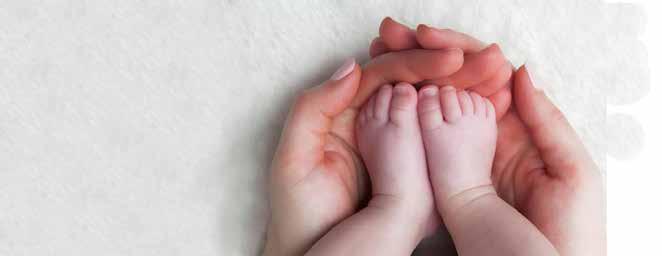
JOIN OUR FERTILITY
Wellness Program
Cal l / whatapp
https://www.facebook.com/ayurvedicherbal healthcare/
https://www.instagram.com/ayurvedicherbal healthcare/
+91-9250868756
+91-9910518756
Address :- SAMBHAV Ayurveda Infertility Clinic, WZ-432 Naraina vil lage, near Naraina Metro Station, New Del hi 110028
Email :- sambhavayurinstitu te@gmail.com
ayurvedichel bal
health@gmail.com Website :- https://ayurvedicherbal healthcare.wordpress.com/
We Koryfi Group of Media and Publications will donate 10% of your fees or subscription to the noble cause of Blood Donation Activities to the NGO “RaktDaata Federation”
RaktDaata Federation has been formed with the noble intention of providing Blood to people in need. The core idea of the formation of this trust came from observing the difficulties that patient’s relatives face in arranging blood. The situation is especially worse in Government Hospitals which usually serve the majority percentage of patients.
Our Focus Areas are

◆ Create awareness about blood donation and explain its benefits to the people
◆ Make blood donation approachable for people by collaborating with hospitals and arranging blood donation camp at their doorstep
◆ Create a society where all blood requirements can be fulfilled through voluntary donation and no replacement donation
◆ Make voluntary donors available to those in desperate need of blood
◆ Cultivate a habit of regular donation of every 3 months among people
◆ Discourage and refrain from any practices that associate blood with money
Mr. Rushi Dave, The President and Founder of RaktDaata Federation, is a recipient of numerous International and National awards for the cause of blood donation. He and his team members actively arranges blood for needy people through national and city-run WhatsApp groups. He frequently organizes community events with enthusiastic donors and continuously engages and motivates first-time donors.
Koryfi Group of Media and Publications
Address: C-307, 3rd Floor, Pushp Business Campus,
Vastral Crossing, S. P. Ring Road, Vastral, Ahmedabad,
Gujarat, India – 382418 Email: Koryfigroup.india@gmail.com
